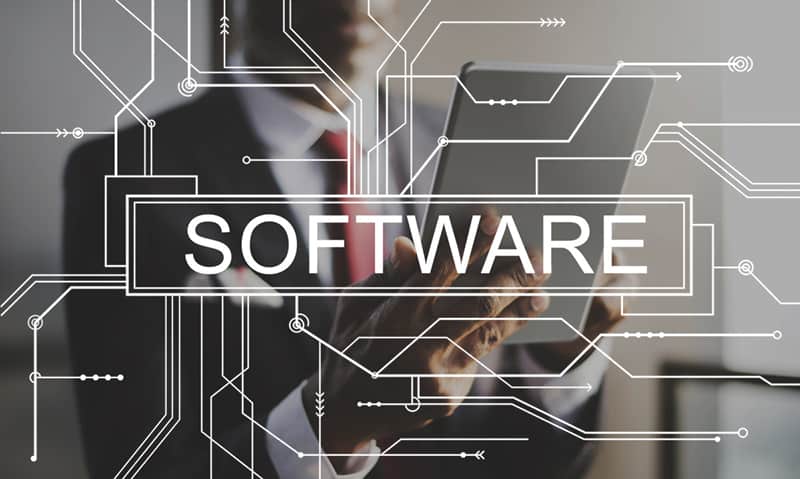Click here to get this post in PDF

With the ever-increasing population and competition, business models have become quite dynamic and complex. They have a huge task ahead of them to organize and compile data of thousands of clients. Mainstream software like Excel can longer cope with such a vast and diverse database. Thus, businesses started turning to software-based on ERP and CRM. Let us throw some light on the key points of this software.
The rise of ERP
What is ERP software? In layman terms, Enterprise Resource Planning software is a one-stop solution for businesses which assist in achieving the needs of a business, from Human Resources, Manufacturing, Accounting, Sale point to even stock taking. ERP features a shared database that has the capacity to support multiple functions. They give you a real-time feed of all your resources from cash at hand to inventory just at the click of a button. They bring all the different aspects of the business under one roof and make life easier for owners in this cut-throat era of business, where having a slight advantage can mean getting the competitive edge the company needs. ERP helps streamline all the different aspects of business and provides a detailed analysis of any lags in business concerned with warehousing to customer relations management. It also helps you analyze and get live reports at the click of a button. ERP’s help in synchronizing and automating different units of business by maintaining a database of all its activities.
History of ERP and CRM
The use of computers for commercial applications started in the 1960s.
These computers were far primitive from the ones we have available now. These noisy, bulky computers were used to create systems that were custom made for each area, with no integration whatsoever. This increased the cost of development and modification alarmingly. Small and medium business owners in the past had to maintain different databases to keep a check on what was happening in their business. Which meant each unit of business had to have a dedicated team to maintain those databases. All the systems created for different areas of business were inharmonious.
The first CRM (Customer Relationship Management) software was a one-dimensional program where filling cards with customer details were used.
Materials Requirement Planning (MRP) (1970), which was first implemented by IBM, tried to combine scheduling and planning essentials to the process of manufacturing.
MRP imbibed planning and procuring of purchase requirements on the basis of products that were finished, the inventory on hand, the allotted inventory and the expected arrivals. Stock inventory software will allow for good stock management. Capacity Requirement Planning (CRP) was introduced to complement MRP to help in generating plans for shop floors and sub-contractors.
The Mid to late 1980s saw the integration of various platforms such as customer data, analytics and transactional databases. Customers built familiarity with CRM due to its use in health care, utilities and consumer goods.
ERP was first introduced in the late 1980s as a sequel to MRP II, to combine the functional aspects of businesses that were not covered by MRP. With ERP software development, business owners were now able to cover all facets of their organization, from finance to project management. The development of ERP was aided by software solution providers from Germany, USA and Netherlands.
There were a select few who did not follow this course. The ERP witnessed continuous evolvement of the software, with vendors constantly adding new functionalities, incorporating internet browser interface and bringing out new product versions.
The term ‘ERP’ was coined in 1990 by Gartner, and in 2002 the Gartner group defined ERP II as a software that was internet-enabled and gave real-time access to the ERP solution, along with providing functionalities outside the business such as Customer Relationship Management (CRM).
The term ‘Customer Relationship Management’ was coined in 1995.
Compatibilities and Complementations
CRM goes hand in hand with ERP, managing a company’s relationships and their interactions with their customers. A CRM system aids companies in staying connected to their customers and consequently, helps improve profitability.
Gartner’s prediction for CRM is that by 2021 it will be the largest revenue area of spending in enterprise software. Many such pieces of software could be contributing to the prediction such as https://www.practicepro365.com/ which enables a company to attain a clear overview of customers. Such software combines everything in one place, such as customer history, order status and even service issues.
CRM enables businesses to better understand their prospects and make forecasting more accurate. It lessens the need to have a huge number of administrates. It eliminates trivial mistakes that are made such as information getting lost, analyzing all collected data manually and increases the time efficiency of a company.
These pieces of software have truly revolutionized client data and business management and business.
You may also like: Why Outsourcing Your Software Development Could Give Your Business an Edge?
Image source: stock.adobe.com

[…] You may also like: Some Essential Software for Your Business […]